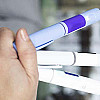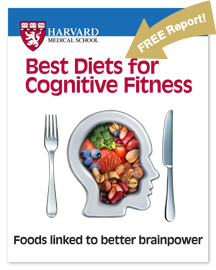
Counting steps is good — is combining steps and heart rate better?

Appendix pain: Could it be appendicitis?

Can saw palmetto treat an enlarged prostate?

How does Ozempic work? Understanding GLP-1s for diabetes, weight loss, and beyond

Zinc: What it does for the body, and the best food sources

Respiratory health harms often follow flooding: Taking these steps can help

Tips to leverage neuroplasticity to maintain cognitive fitness as you age

Can white noise really help you sleep better?

Celiac disease: Exploring four myths

What is prostatitis and how is it treated?
Heart Health Archive
Articles
A different type of heart attack
Spontaneous coronary artery dissection is an underrecognized but important cause of heart attack, especially in younger women.
Most heart attacks happen when a blood clot blocks an artery feeding the heart. But a small percentage result from a tear in the inner wall of one of the heart's arteries. The resulting flap or swelling inside the artery wall obstructs normal blood flow. Known as a spontaneous coronary artery dissection, or SCAD, the condition strikes both sexes but is more common in women.
In women who are under 50, SCAD is the most common reason for acute coronary syndrome. This medical emergency refers to inadequate blood flow to the heart; it includes both heart attacks and unstable angina (sudden chest pain that occurs at rest).
Fruit of the month
Editor's note: This year, we're highlighting fruits on this page. Starting in February, we'll showcase a different type of fruit or group of related fruits, such as citrus fruits or melons. We'll include ideas about the best ways to add more of these heart-healthy foods into your diet.
If you eat berries with breakfast, snack on a banana, and toss some cubed apple or pear in your dinner salad, you can easily meet the recommended amount of fruit for adults, which is 1.5 to 2 cups per day. But such habits are unusual: Fewer than one in 10 Americans consumes even the minimum recommended amount of fruit, according to a national federal survey.
Taking steps to avoid high blood pressure
Research we're watching
Walking even at a "casual" pace — covering a mile in 30 minutes — five days a week may lower the odds of high blood pressure in postmenopausal women, a new study finds.
Researchers relied on data from more than 83,000 women ages 50 to 79 who did not have high blood pressure. When they joined the study, they filled out questionnaires about their walking speed and duration. This was followed by yearly questionnaires that included checking for a diagnosis of high blood pressure.
Googling "chest pain" during the COVID-19 pandemic
Research we're watching
Google searches for "chest pain" spiked in March and April of 2020 during the initial sharp rise in COVID-19 infections, according to a new study. The findings suggest that people were attempting to self-diagnose heart attacks — and may explain why fewer people sought treatment for heart attacks in hospitals during the pandemic.
The study relied on Google Trends, a tool that monitors search term queries over time. The authors looked at searches for "chest pain" and five control terms — "toothache," "abdominal pain," "knee pain," "heart attack," and "stroke" — from January 2017 through May 2020. Searches for chest pain (a common symptom of heart attack but not COVID-19) spiked in states with high rates of COVID-19 infection (New York, New Jersey, and Illinois), while searches for other terms stayed steady.
Get FITT to better fight heart disease
If you've been diagnosed with heart disease, the FITT approach can reduce your risk for heart attack and stroke.
About half of all Americans have at least one of the key risk factors for heart disease, such as high cholesterol, high blood pressure, and excess weight.
You can address those risks with a heart-healthy diet and medications to lower blood pressure and cholesterol levels. But perhaps the biggest boost you can give your heart is regular aerobic exercise.
Artificially sweetened drinks: No heart health advantage?
Research we're watching
Think you're doing your heart a favor by drinking diet instead of regular soda? That may be wishful thinking, according to a research letter published Nov. 3, 2020, in the Journal of the American College of Cardiology.
Researchers studied nearly 105,000 people who filled out three 24-hour dietary recall surveys every six months. During a 10-year follow-up, researchers tracked the participants' cardiovascular health.
3 supplements that may harm your heart
Labels on the bottles promise better health, but these supplements may wind up hurting you.
Keeping your heart healthy requires a combination of strategies, such as eating a healthy diet, exercising regularly, and managing stress. Adding a dietary supplement may seem like another means of protection.
But be careful. Unlike prescription medications, supplements are often sold without evidence that they work or they're safe. There's no way to know what's really inside pills or potions, since the FDA doesn't evaluate whether the manufacture of supplements is high quality, such as whether the pills are free from impurities. The following supplements may pose heart risks.
Will eating more chilis help you live longer?
A new report suggests eating chili peppers regularly could lower the risk of dying of cancer or cardiovascular disease. One theory attributes such health benefits to capsaicin, an antioxidant that brings the heat. But just how strong are these findings?
Cooking from — and for — the heart this holiday season
Make some simple swaps to lighten up traditional fare. But feel free to enjoy small servings of favorite treats, too.
'Tis the season to be jolly — and to indulge in favorite holiday foods and beverages. The weeks between Thanksgiving and New Year's Eve are often full of opportunities to feast on foods high in fat and sugar. The average American packs on an extra pound of weight every year, and at least half of that is gained over the holiday season, according to several studies.
To help curtail that trend, which will help your heart as well as your waistline, try some of the alternative or lighter versions of foods and drinks traditionally served during the December holidays, described below. But there's no need to deprive yourself of special favorites that you have just once a year. "You can weave them in with healthier options," says Liz Moore, a dietitian at Harvard-affiliated Beth Israel Deaconess Medical Center.
Resuming sex within months of a heart attack linked to longer survival
Research we're watching
Couples sometimes worry about restarting sexual activity after one partner has had a heart attack. But a new study has found that returning to usual levels of sexual activity within a few months of a heart attack is linked to improved survival.
The study, published online Sept. 23, 2020, by the European Journal of Preventive Cardiology, included 495 sexually active people who were hospitalized for a first heart attack in 1992 or 1993. All of them were 65 or younger (the average age was 53) and 90% were men.

Counting steps is good — is combining steps and heart rate better?

Appendix pain: Could it be appendicitis?

Can saw palmetto treat an enlarged prostate?

How does Ozempic work? Understanding GLP-1s for diabetes, weight loss, and beyond

Zinc: What it does for the body, and the best food sources

Respiratory health harms often follow flooding: Taking these steps can help

Tips to leverage neuroplasticity to maintain cognitive fitness as you age

Can white noise really help you sleep better?

Celiac disease: Exploring four myths

What is prostatitis and how is it treated?
Free Healthbeat Signup
Get the latest in health news delivered to your inbox!
Sign Up











